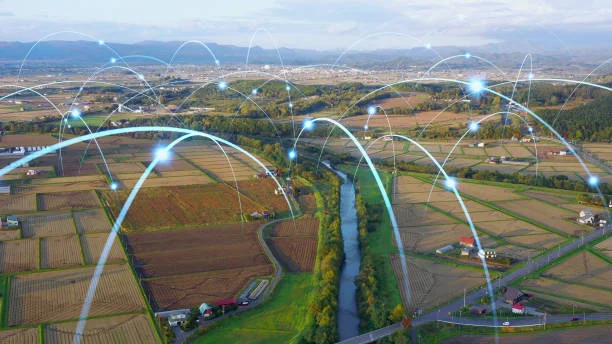Speak with any experienced operator or site manager, and what they will tell you without fail is this- earthmoving isn’t what it was. It’s smarter, it’s cleaner, and it’s more efficient if done properly. And with tightening regulations and thinning margins on projects, sustainable land use isn’t a catchphrase any longer—it’s an imperative.
Take the backhoe loader, for instance. This workhorse has long since transcended raw digging power. Today’s models are fitted with hybrid power plants, idle-reduction technology, and smart-feeling telematics. All of that fits into a larger trend: employing smarter equipment to accomplish more with fewer emissions, less fuel, and a lower footprint on the land itself.
But sustainability does not equal compromising on performance- in fact, it is quite the contrary.
Thanks for reading—why not stick around and see what else is new?
Precision Over Power Fixing the Machine Playbook
Old-school land grading and clearing were wasteful by our current standards. You would level and then calculate the usefulness of the land after. Today, with machine control systems, GPS grading, and load-sensing hydraulic systems, we don’t just relocate dirt – we sculpt it with precision.
This transition isn’t only beneficial to the planet, it’s a cost saver in direct terms. Smart equipment reduces rework, minimizes fuel consumption, and lessens wear on key components. For example, a jaw crusher may be able to break down that one pesky chubk of wall you have been trying to break down for a while, with no hassle. You’re not digging out beyond what the job requires or idling in high gear if a lighter load will be enough. For instance, with real-time terrain data, a dozer or grader can now vary blade pitch and angle mid-pass to minimize runs to achieve grade. That translates to less machine time, fewer emissions, and less labor hours—any site manager’s ideal.
Water Management the Biggest Environmental Perk
One of the frequently neglected areas in sustainable land use is water. Effective dewatering, groundwater control, and site drainage are not convenience measures—they are essential to land integrity and the environment. Enter the submersible pump, which is a low-noise and energy-efficient means of removing water that does not disrupt ecosystems. With the aid of smart monitoring systems, these pumps can be set to turn on via water level sensors so that energy is not wasted on inessential usage.
Pumping water only as required and doing so in a clean manner minimizes the effect on natural water tables. It also ensures site conditions are best suited to machine mobility and minimizes the chance of soil degradation and erosion—a double benefit to productivity and sustainability.
And with the modularity of today’s pumps, repositioning and servicing occurs quicker, saving downtime and labor. This is what makes the right equipment choice go hand-in-hand with sustainable results of Sustainable Land.
Fuel Efficiency Save some Major Bucks
Diesels are not disappearing tomorrow, but the way we utilize them is changing fundamentally. Tier 4 Final engines, hybrid powertrains, and idle-management capabilities are now standard on a lot of equipment. Operators who know the way to work with these capabilities—instead of working around them—can save thousands of gallons of fuel during the life cycle of an assignment.
Intelligent equipment leads to intelligent diagnostics. Telematics equipment today monitors fuel consumption, idling, and even driver conduct in real-time. Used wisely, that data triggers a closed-loop effect: wiser working means less money spent on fuel, decreased emissions, and lower overall cost of ownership.
And here is the best part: clients are taking notice. Increasingly, tenders and contracts incorporate sustainability scoring or LEED factors. Arrive with low-emitting, high-efficiency equipment and you are already ahead of the curve.
Restorative Practices – A Long Term Investment
Sustainable land use doesn’t simply conclude with the final trench excavation or pouring of foundation. More projects these days require a reclamation plan, particularly in mining, agriculture, and utility applications. Intelligent equipment with grading automation and soil mapping capabilities assists in developing contours in the land to facilitate natural drainage, minimize erosion, and even be planted or seeded right after the project.
With mulch blowers, hydro seeders, or low-impact track machines, the equipment one would use to construct can be repurposed to repair. The payback here is not only reputational—it’s regulatory adherence and reduced long-term liabilities.
A Better Bulldozer for a Better Site
So, what place does the good old road roller and its bigger version, the bulldozer, play in this new sustainability narrative? Right in the middle of it.
Modern dozers are fitted with everything from automatic blade control to sophisticated fuel maps and eco-modes that throttle back in light load conditions. Scraping and pushing freely is no longer the way things are done. It is all about precise control and minimum disruption to the ground with optimal pass efficiency.
And yes, all of that equates straight to profit: less fuel. Less downtime. Lower wear. And on top of that the environmental goodwill of appearing with a fleet of clean-running, emissions-compliant equipment, and you’re in business to succeed—let alone last.
Go Green for the Money
Let’s be realistic- if your business isn’t embracing sustainable measures right now, then you are already behind. Customers, governments, and even your bottom line are calling for leaner, cleaner, and smarter operations.
To explore all our latest posts in one place, be sure to visit the 2A Magazine.







